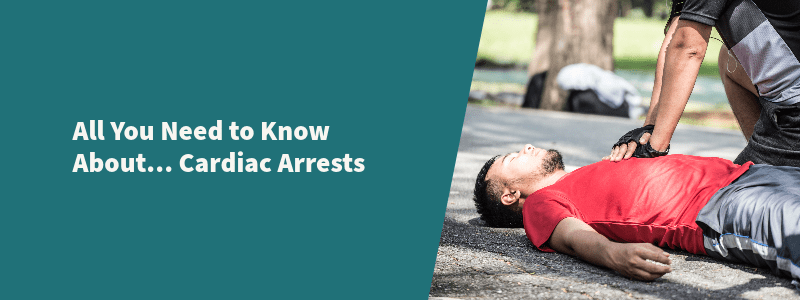While there have been a number of news stories that have brought cardiac arrests into the mainstream consciousness – you may possibly think of sportspeople, footballers especially – there’s still a lot of unknowns. But these unknowns are costing people their lives. Educating the general public offers the best chance of reducing the rates of deaths from cardiac arrests – survival rates for out of hospital cardiac arrests sit at a depressing 1 in 10. So what is there to know about cardiac arrests? At Direct365, we’re passionate about changing minds and educating people on the subject. That’s why we’ve put together an ‘all you need to know about…’ blog, giving you all you need to know about cardiac arrests.
What is a Cardiac Arrest?
A cardiac arrest happens when your heart starts beating abnormally, and either stops your heart or it struggles to beat as it should. This comes from the electrical system of the heart not beating properly. This can be caused by a number of problems, but one is called ventricular fibrillation (VF), which is when the heart quiver (fibrillates) when it should be pumping. This causes blood to stop pumping around the body. If a patient is going through a cardiac arrest, they need instant treatment. This should be in the form of CPR and the use of a defibrillator.
Cardiac Arrests in Numbers
Here are some of the facts associated with cardiac arrests. Some are quite shocking and just goes to show the need for more public access defibrillators within the U.K.
- 80,000 people suffer out-of-hospital cardiac arrest each year – 200 a day
- 80% of these cases happen at home
- Each minute without CPR and defibrillation reduces survival chances by 10%
- A mere 1 in 10 people survive a cardiac arrest
- In research done by Resuscitation Council UK states that 15% of people think defibrillators can only be used by medical professionals
How to Treat Cardiac Arrests
If you see someone having what you suspect of a cardiac arrest then you must act fast. For context, every minute without giving CPR or using a defibrillator on a patient the survival chances reduce by 10%. So if you see someone collapse, and they aren’t conscious, you need to start checking for breathing quickly.
If the patient appears unconscious and not breathing, then alert a passer by do look for a defibrillator urgently. While doing that, it is up to you to do CPR on the patient. This will help the blood to continue pumping around the body.
Hopefully by then someone will have returned with a defibrillator. Defibrillators are great machines and will guide you through the entire process with strict directions on what to do and when. They’re made with the general public in mind and you don’t need to be trained to use one. If the patient needs a shock, the defib will tell you to press the shock button (semi-automatic) or administer the shock itself (automatic). Delivered quickly, these actions give the patient the best possible chance of survival.
The Warning Sign of a Cardiac Arrest
While cardiac arrests come on suddenly, there are a number of warning signs that you can look out for. These include:
- Chest pain
- Shortness of breath
- Extreme tiredness
- Heart palpitations
- Dizziness or fainting
There are other possible signs but these are some of the most common and you should be aware of in the event that someone has a cardiac arrest.
Are Defibrillators Easy to Use?
Defibrillators are really easy to use. They have been made with the end user in mind, and the end user being a member of the public. That should give you some insight into how easy they are to use.
Each machine will have a set of audio or video instructions that guide you through to process of using a defibrillator. Stage by stage, you will be told what to do and when to do it. There’s almost no way you can go wrong.
Cardiac arrests are scary and can be fatal, but there are ways to reduce the risk of death. For our country, there needs to be more of a conscious effort to deliver public access defibrillators to communities that don’t have them. This would help gradually increase the chances of saving lives from cardiac arrests. If you’re looking for a defibrillator, we have a wide range of defibrillators for an array of budget. Check out our range today for more information.
Back

